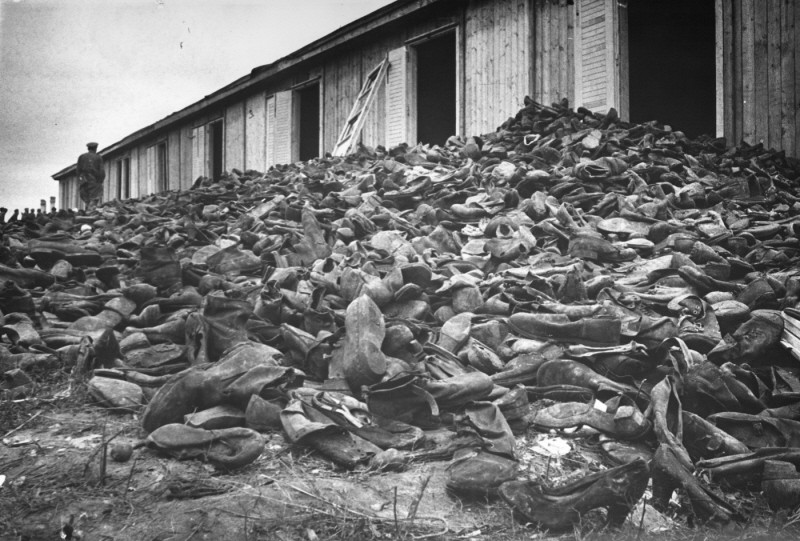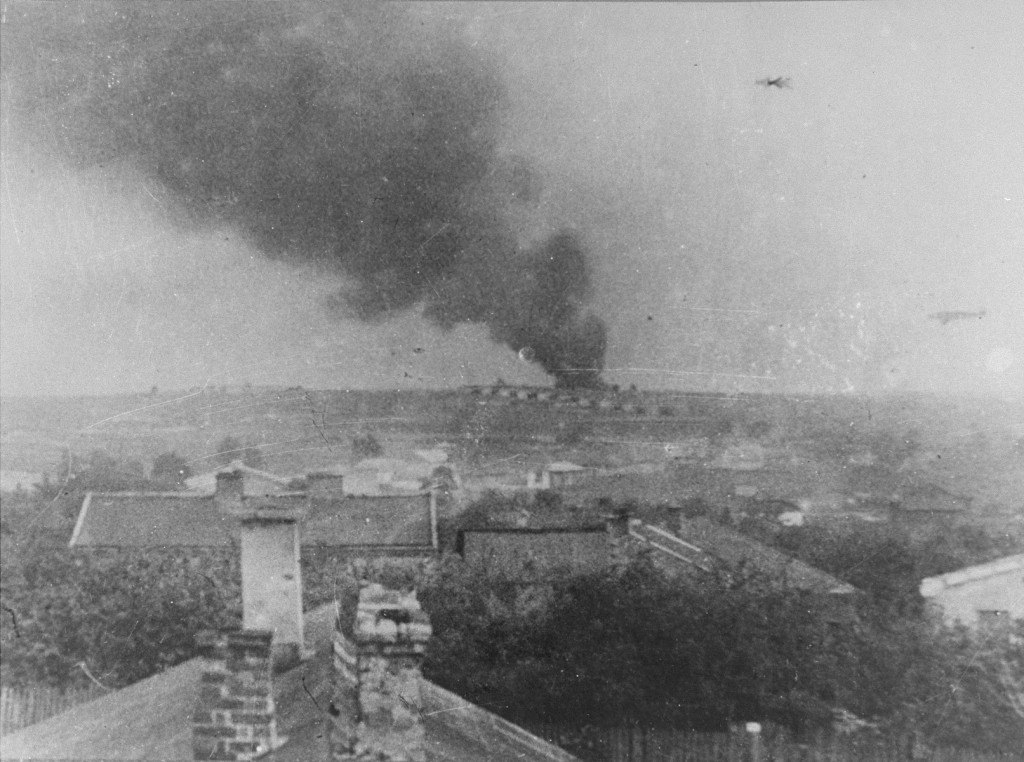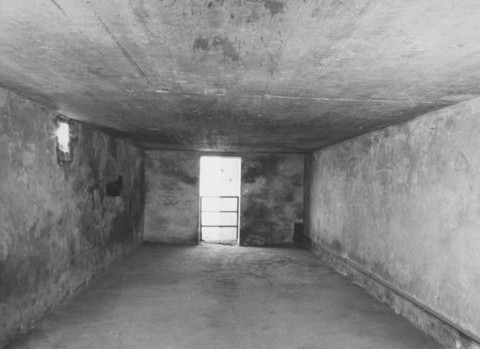
Lublin/Majdanek: Key Dates

July 21, 1941
On a visit to Lublin in July 1941, SS chief Heinrich Himmler orders the SS and Police Leader in Lublin, SS Major General Odilo Globocnik to construct a concentration camp in Lublin. The camp is intended to provide a supply of forced labor to produce construction materials and carry out construction projects for future permanent German settlements in occupied Poland and the occupied Soviet Union.
Early October 1941
Following the choice of a site on the east/southeast side of town, near the suburb of Majdan-Tatarski (from which the nickname “Majdanek,” or little Majdan is derived), construction on the camp begins in early October with the arrival of around 2,000 Soviet prisoners of war.
Mid-October 1941
In mid-October 1941, Himmler entrusts Globocnik with implementing Operation Reinhard, which has four purposes:
- mass murder of Jews residing in the Generalgouvernement
- exploitation of labor of a minority of Jews permitted to survive temporarily
- seizure, evaluation, and recycling for use all personal property taken from the murdered Jews
- identification and securing of all so-called hidden assets of the Jewish population
December 1941-February 1942
Majdanek becomes a forced-labor camp for Jews within the framework of Operation Reinhard. On December 12, 1941, 150 Jews, seized off the streets of Lublin, become the first Jewish forced laborers in Majdanek. In February 1942, the first non-Jewish Polish prisoners arrive, along with more Jews selected from the Lublin ghetto.
March 29, 1942-June 15, 1942
On March 24, 1942, the SS Main Office in Oranienburg, Germany, informed Majdanek commandant Karl Otto Koch that Jews from Slovakia would arrive there in three days. Between March 29 and June 15, 1942, the SS diverts around 7,000 Slovak Jews bound for Auschwitz and Belzec to Majdanek. The SS also selects German and Austrian Jews off trains bound for the camp-ghettos Piaski and Izbica and sends them to Majdanek as forced laborers. Between March and June 1942 about 14,000 Jews from Bohemia and Moravia arrive in Lublin District in 14 transports. The SS sends most of them to Izbica and Piaski and, after it begins operations in May 1942, directly to the Sobibor killing center. At least 2,000 are selected off the train transports in Lublin and diverted as workers to Majdanek.

October 1942-September 1943
The SS constructs two, possibly three gas chambers at Majdanek to eliminate those prisoners no longer capable of work. Reportedly, both Zyklon B and carbon monoxide gas are used to kill human beings. In one, possibly two cases, large numbers of Jews are sent to Majdanek to be killed upon arrival, though available records are insufficient to estimate how many were killed upon arrival. In November and December 1942, as the Belzec killing center closes down, around 25,000 Jews are diverted to Majdanek: at least some, possibly all, were killed upon arrival. In April-May 1943, the SS and Police deport between 18,000 and 22,000 Warsaw Jews to Majdanek; it is possible that thousands were killed upon arrival.
Summer 1943
German SS and police units remove about 16,000 Poles from Zamosc county, located southeast of Lublin in Lublin District of the Generalgouvernement, and hold them temporarily in Majdanek. Himmler had ordered the "cleansing" of Polish villages from Zamosc county as the first step in the "Germanization" of Poland. The Germans expel about 110,000 Poles from the region. Thousands will be deported to Auschwitz and Majdanek and thousands of others to forced labor in Germany.
November 3, 1943
SS and police units carry out orders from Himmler to murder the surviving Jews in Lublin District, including the remaining Jewish prisoners at Majdanek. They concentrate 18,000 Jews from various camps and prisons in Lublin, including at least 8,000 Jewish prisoners in Majdanek, and then shoot them in large prepared ditches outside the camp fence near the crematorium. This is known as Operation "Erntefest" (Operation Harvest Festival).
The killing at Majdanek on November 3, 1943, was the largest single-day, single-location massacre during the Holocaust.
Also as part of “Harvest Festival,” the SS and police kill between 11,000 and 16,000 Jews at Poniatowa and between 4,000 and 6,000 Jews at Trawniki. Himmler ordered the implementation of Operation “Harvest Festival” because he feared more incidents of armed Jewish resistance after the prisoner uprising at the Sobibor killing center. The SS and police kill about 42,000 Jews during Operation “Harvest Festival.”
January-May 1944
As Soviet troops approach the prewar Polish border from the east, the SS authorities begin to evacuate prisoners from Majdanek to the west. In five months, thousands of prisoners are transferred west from Majdanek to Auschwitz, Bergen-Belsen, Gross-Rosen, Ravensbrück, Natzweiler, and Płaszów. By early June 1944, Majdanek is almost empty.
July 23–24, 1944
Soviet forces liberate Lublin/Majdanek and find fewer than 500 prisoners left in the camp. The Soviets' rapid advance did not permit the Germans time to destroy the facility. In almost three years of operation, between 95,000 and 130,000 died or were killed in the Majdanek system; between 80,000 and 110,000 were killed in the main camp alone. The majority of prisoners were Jews; the overwhelming majority of those who died were Jews, between 80,000 and 92,000 in the system and between 60,000 and 72,000 in the main camp.
Critical Thinking Questions
- To what degree was the local population aware of this camp, its purpose, and the conditions within? How would you begin to research this question?
- Where were camps located?
- Did the outside world have any knowledge about these camps? If so, what, if any, actions were taken by other governments and their officials?
- What choices do countries have to prevent, mediate, or end the mistreatment of imprisoned civilians in other nations?

